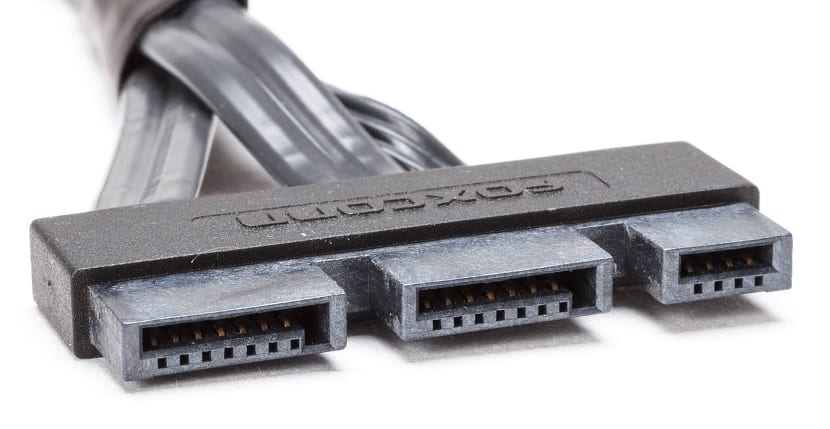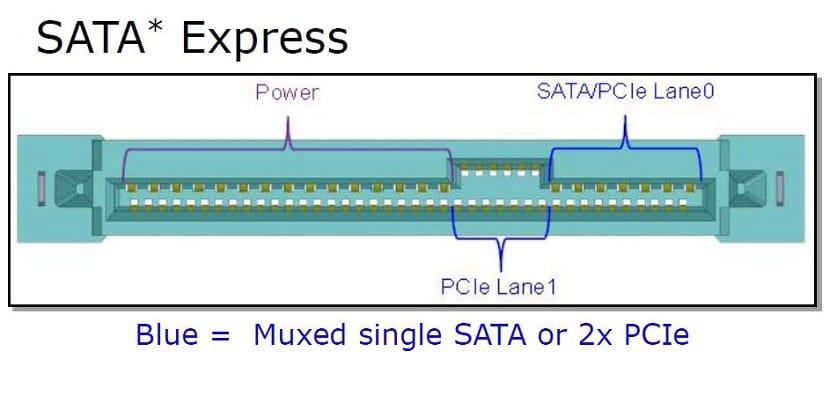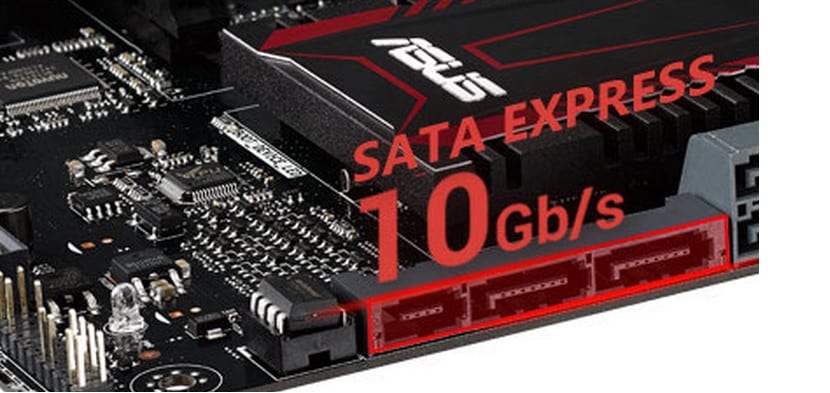
It's very probable that Have you ever heard of the SATA Express connector?. Over the years, the storage segment has evolved remarkably, especially with the presence of SSDs. Therefore, this term that we have mentioned began to become known among many users in the operating system. While there are many users who do not know exactly what it is.
Next we tell you more about SATA Express and its current state this technology today. Since the many changes that have occurred in this time have had a clear influence on it.
What is SATA Express

SATA Express is a high speed connection interface which is based on SATA (Serial ATA) technology. It supports devices of this type as well as PCI Express. It is an interface that we normally know as SATAe, which you have probably seen on occasion. Although it is important to mention that it is not something to be confused with eSATA. The latter are intended for external units. So they are different.
SATA Express hit the market in 2014 as SATA 3.2, is the name by which many may know it. It came with the intention of providing the capacity to support PCIe devices. In this case, this new interface had the capacity to reach a speed of 16 GB / s, which is the same as 1,97 GB / s. In this way, it significantly outperformed SATA 3.0 in this regard. An important advance, therefore.
Because of this, the SATA designers found doubling the speed on the basic interface too costly, and which also resulted in energy consumption much older. For this reason, they were forced to look for other solutions. This is what they achieved by adapting the data transmission protocol to a new interface, based on PCI-Express. Thus, higher speeds are achieved, with reduced energy consumption. The desired combination in this regard.
That is why SATA Express can work with the AHCI (Advanced host Controller Interface) communication protocol, but also with the NVMe logical interface. This is something that allows you to get a lot out of PCIe storage units. In addition, it is responsible for providing compatibility to older computers that have AHCI.
SATA Express Features

The highlight of SATA Express is that can support both PCI Express and SATA. So it is a much more versatile option in this regard for users. This is possible thanks to the connection through PCI Express 2.0 and 3.0 buses or through the SATA 3.0 ports connected to each other with a power connector.
Devices that connect using the first method (PCIe) will have a direct connection between the motherboard and the storage drive. In this way, no need to use an extra layer with which to make these connection protocols compatible. It is the main advantage that SATA Express provides us. It makes this process much easier.
While it does provide some clear benefits, there are also some other negative aspects on SATA Express. Although it offers us the support for these two protocols, only both can be connected simultaneously. This implies that the user who connects a SATA hard disk to his computer, will see how the equipment works with the one he has connected, if it is the PCIe only with that and if it is the SATA, only with that.
Why is SATA Express not used

Despite the advantages it has, today we can see that SATA Express is not used much. The main reason is that there is another interface that has stolen the limelight, which is M.2. It is an interface that was seen as a substitute, and that little by little is meeting these expectations.
The main difference is that M.2 does not have the limitations that we find in the case of SATA Express. For this reason, most manufacturers opt for this option today.